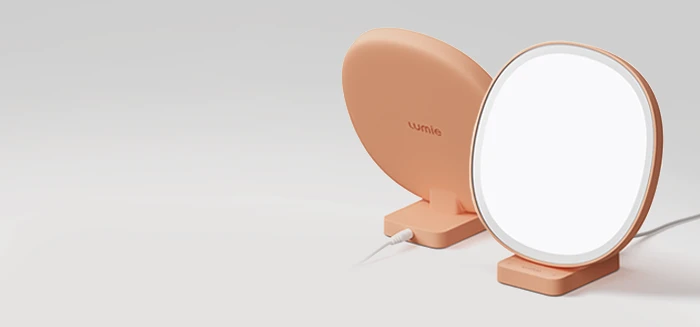Seasonal Affective Disorder: Frequently Asked Questions
.jpg)
Seasonal affective disorder (SAD) is a mood disorder which is often linked with the limited daylight hours of autumn and winter. Light is the most powerful synchroniser of our circadian rhythms and when we don’t have light as a cue, our circadian rhythms can become out of sync.
When we spend extended periods indoors and in dimly lit environments during autumn and winter, the pineal gland is signalled to produce melatonin (which usually happens at night), leading to increased feelings of tiredness during the day.
This reduced light exposure can also influence the levels of serotonin in the body, prompting them to decline and leading to low mood and concentration difficulties.
Many people start to experience symptoms of SAD during autumn and winter and they find that symptoms improve during spring and summer. Symptoms include:
- Persistent low mood
- Fatigue and lack of energy
- Lack of interest in pleasurable activities
- Concentration difficulties
- Irritability
- General overeating and craving carbohydrates
If symptoms persist or become more severe, speak to a medical professional.
More women are diagnosed with SAD than men, and symptoms usually begin to occur in young adulthood. SAD symptoms are also more common in those who live further away from the equator where daylight hours decrease during winter and are longer during summer.
Bright light therapy helps to alleviate symptoms of SAD by mimicking natural sunlight, helping to suppress the production of sleep hormone melatonin, and stimulating the release of serotonin which plays a role in mood regulation. Exposure to bright light helps to reset the body's internal clock and improve mood, energy levels and overall well-being.
Other treatment options include talking therapies such as CBT and medication such as antidepressants.
We recommend that you place your Lumie SAD lamp at around arm’s length, angled towards the face (there is no need to stare directly into the light). Start with 30 minutes to an hour of exposure per day and increase this if needed. You can have your bright light therapy session in one go or on and off throughout the day for a cumulative effect.
Many people find that using a SAD lamp first thing in the morning is most effective. If you find it difficult to get going in the morning, aim to switch on your SAD lamp as soon as possible. If you don't have time for a bright light therapy session in the morning, aim for a top-up or full session in the afternoon.
If you find that you feel sleepy or fall asleep earlier than you would like to, you can use your SAD lamp in the late afternoon/early evening. You should avoid bright light too close to bedtime (within around three hours) as you may experience difficulties falling asleep.
Scientific research and feedback from our customers indicate noticeable changes within just a few days of starting bright light therapy. You should expect to feel the benefits within the first 1-2 weeks of using the light. Interestingly, many individuals even report feeling positive effects such as improved energy levels after their first session! Here are just a few customer reviews on our bright light therapy lamps.
"This is the best thing I've ever bought for my winter blues!"
"Lifesaver for winter months; portable and effective for SAD"
"Life-changing for SAD relief"
You can explore Lumie's full range of SAD and energy lamps here. For a gentler way of waking, why not also check out Lumie's wake-up lights to ease into the day with a soft sunrise rather than a shrill alarm?





.jpg)